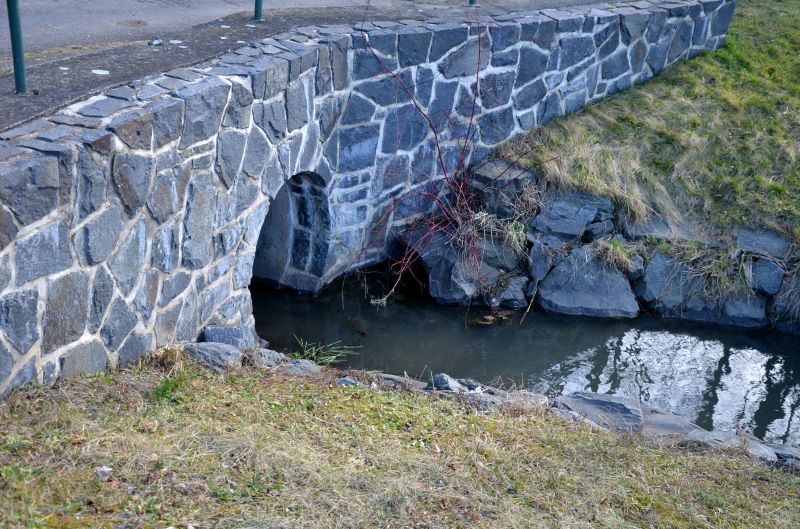Leading Products for Driveway Culvert Installations You Can Trust
Explore top-rated culvert products designed to ensure durability, ease of installation, and long-lasting performance for your driveway proje
 Driveway culvert installations are essential components for managing water flow and preventing erosion around access points. Selecting the right products ensures effective drainage and long-term durability. Culverts come in various materials, sizes, and designs to accommodate different driveway conditions and load requirements. Proper installation and material choice can significantly impact the longevity and functionality of the culvert system, making it a critical consideration for property owners and contractors alike.
Driveway culvert installations are essential components for managing water flow and preventing erosion around access points. Selecting the right products ensures effective drainage and long-term durability. Culverts come in various materials, sizes, and designs to accommodate different driveway conditions and load requirements. Proper installation and material choice can significantly impact the longevity and functionality of the culvert system, making it a critical consideration for property owners and contractors alike.
Top Overall Option
High-Density Polyethylene (HDPE) Culvert Pipe
HDPE culvert pipes are known for their flexibility, corrosion resistance, and ease of installation. They are suitable for a variety of driveway applications and can handle different load levels. Their lightweight nature simplifies transport and handling, making them a popular choice for many projects. HDPE pipes also offer smooth interiors that promote efficient water flow and reduce clogging risks.
Types of Products For Driveway Culvert Installations
Concrete Culvert Pipes
Heavy-duty and durable, concrete culverts are often used for high load areas and long-term installations, providing stability and strength.
Corrugated Metal Culverts
Made from galvanized steel or aluminum, these culverts are flexible and resistant to impact, suitable for various soil conditions.
High-Density Polyethylene (HDPE) Culverts
Lightweight and corrosion-resistant, HDPE culverts are easy to install and adapt to different project sizes.
Reinforced Concrete Pipe (RCP)
These pipes combine concrete strength with reinforcement, ideal for heavy traffic areas and large drainage needs.
Plastic End Caps and Flanges
Accessories that seal or connect culverts, ensuring proper water flow and structural integrity.
Culvert Fittings and Connectors
Various fittings designed to join culvert sections or adapt to different drainage configurations.
Gravel Backfill Material
Crushed gravel or stone used to support culverts and facilitate proper drainage around the installation.
Drainage Filters and Socks
Filters that prevent debris from entering culverts, reducing clogging and maintenance needs.
Reinforced Plastic Culverts
Enhanced plastic culverts with added strength for more demanding applications.
Flexible Corrugated Pipe
Flexible options that can adapt to uneven terrain and are easy to handle during installation.
Precast Concrete Culverts
Pre-manufactured sections that simplify installation and ensure consistent quality.
Metal End Sections
End pieces that provide a finished look and additional protection for culvert edges.
Drainage Grates
Grates that cover culvert entrances, preventing large debris from entering while allowing water flow.
Flexible Couplings
Connectors that accommodate slight misalignments and facilitate secure jointing of culvert sections.
Popular Choices
Favored for its lightweight and corrosion resistance, making installation straightforward for many property owners.
Widely used for their durability and stability in high-traffic or heavy load environments.
Popular for their impact resistance and adaptability in various soil types.
Chosen for quick installation and consistent quality in large-scale projects.
Commonly used to seal culvert ends and prevent debris entry.
Frequently selected to maintain clear water flow and reduce clogging.
Preferred for projects requiring adaptability to uneven terrain.
Selected for demanding applications needing extra strength.
Essential for supporting culverts and ensuring proper drainage.
Often installed for a finished look and added edge protection.
Popular for covering culvert openings and preventing large debris entry.
Commonly used to join sections securely and accommodate slight misalignments.
Trusted for heavy-duty applications requiring long-term performance.
Widely used for their ease of installation and versatility.
When choosing culvert products, factors such as material strength, diameter, and compatibility with existing infrastructure should be evaluated. Concrete, corrugated metal, and high-density polyethylene (HDPE) are common options, each offering unique benefits suited to specific applications. Ensuring that the culvert is properly sized and installed according to site conditions helps prevent issues like clogging, flooding, or structural failure.
Installation techniques are equally important, including proper bedding, backfilling, and secure connections. Accessories like end caps, filters, and reinforcement can enhance performance and ease of maintenance. Regular inspection and maintenance of culverts help identify potential problems early, extending their service life. Investing in quality products and professional installation practices can contribute to a more reliable and efficient drainage system for your driveway.
Key Buying Considerations
- Determine the required diameter based on expected water flow and load capacity.
- Choose the appropriate material considering durability, installation ease, and environmental factors.
- Assess the load class or strength rating suitable for your driveway traffic and vehicle weight.
- Select a product with proper fittings and accessories for a complete installation.
- Consider the installation environment, including soil type and drainage requirements.
- Evaluate the ease of handling and transportation of culvert materials, especially for DIY projects.
- Ensure compatibility with existing drainage infrastructure or future expansion plans.
- Review the product's resistance to corrosion, impact, and UV damage if applicable.
- Check for available warranties or guarantees that support product quality.
- Plan for proper backfilling and bedding materials to support culvert stability.
- Consider the availability of technical support or installation guidance from suppliers.
- Estimate the total project budget, including installation costs and accessories.
- Examine local building codes or regulations related to drainage and culvert installation.
- Prioritize products with clear specifications and detailed installation instructions.
- Think about maintenance requirements and accessibility for inspections or repairs.
